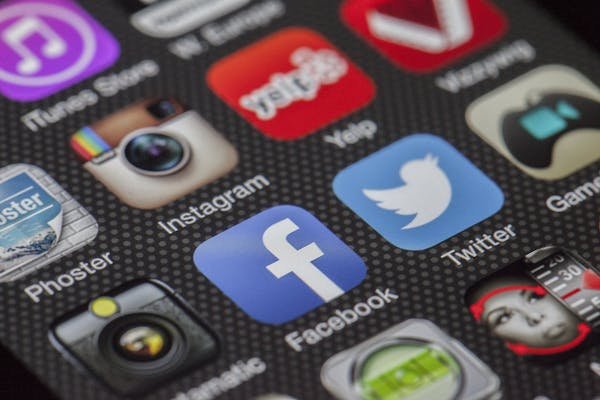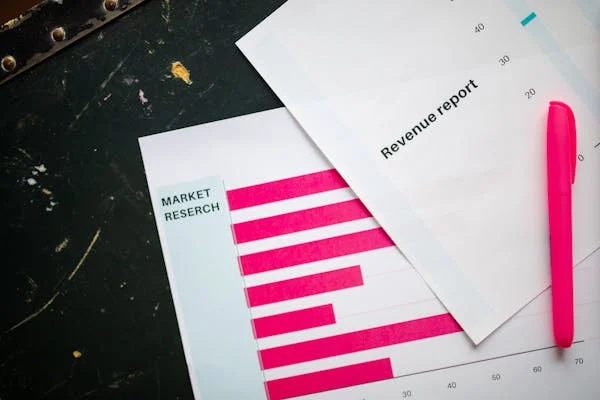Subscription-based models have transformed how companies grow. But they come with a challenge few talk about in depth: subscription fatigue. As customers sign up for more services, they start feeling overwhelmed, even if they once loved those same services. This fatigue doesn’t just affect satisfaction—it hits your bottom line through rising churn and falling retention.
1. 67% of consumers have canceled at least one subscription due to fatigue in the past year
Why this matters
When more than two-thirds of customers admit they’ve canceled a subscription simply because they felt fatigued, it’s a wake-up call. It means the issue isn’t just about price or product—it’s about how users feel. And those feelings are shaping retention outcomes more than ever before.
Many companies assume if the product works, customers will stay. But that’s not always true. Customers often leave even if they still like the service. Why? Because they’re overwhelmed. Too many apps. Too many charges. Too many emails. The feeling builds until one day, they unsubscribe—not because they hate your product, but because they need to make space.
The real danger
If fatigue is driving cancellations, then traditional churn prevention strategies might not work. You can improve support, offer discounts, and still lose the customer. Because this isn’t about how you operate. It’s about how customers live.
This forces a deeper look. What makes your subscription feel “worth keeping” when people are cutting others? What signals fatigue before it shows up as churn?
Actionable response
Start with segmentation. Not all customers are equal. Some are power users. Some are barely active. Use engagement metrics to find the latter. Send simple check-ins to see if they’re overwhelmed or inactive by choice.
Next, simplify everything. Too many plans, too many upsells, too many touchpoints—they all build friction. Reduce decision-making wherever you can. Fewer choices, clearer benefits, smoother exits (yes, even cancellation options) make people feel more in control.
Finally, offer alternatives to canceling. Pausing a subscription feels safer than deleting it. Giving users this option helps reduce fatigue without cutting the tie completely. It’s a soft exit that often leads to reactivation later.
2. Average churn rate for subscription services experiencing fatigue exceeds 10% annually
Looking at the numbers
A 10% churn rate might not sound like a crisis. But think about it this way: If you start the year with 1,000 subscribers and 10% leave, that’s 100 gone. If you don’t replace them, you shrink. If you do replace them, you’re treading water.
The problem with fatigue-driven churn is that it often comes from users you thought were safe. These aren’t always high-maintenance customers. They’re the quiet ones—the ones who leave without warning, often because they’ve mentally checked out weeks before they actually cancel.
Spotting the signs
High churn paired with decent satisfaction scores usually points to fatigue. If people say they like the product but still leave, dig deeper. Look for usage drop-offs. See if reactivation attempts fail. These are fatigue indicators.
Another sign? Sudden cancellations after billing. Many people wait until they see a charge and then cancel in frustration. That means they weren’t paying attention before, which is its own red flag.
What to do about it
Don’t wait for churn. Intervene earlier in the customer lifecycle. Around month 3, when novelty wears off, check in. Offer mini-wins—like personalized tips or time-saving features—to keep them engaged.
Use nudges, not nags. Gentle reminders to explore unused features, combined with quick tutorials, help people feel less lost. People don’t leave when they feel in control.
Also, track reasons for cancellation closely. Most companies don’t ask why people leave. Or they ask, but don’t analyze. A simple tagging system for exit surveys can help. If “too many subscriptions” starts popping up, you’ll know fatigue is at play.
3. 43% of U.S. adults say they feel overwhelmed by the number of subscriptions they have
Understanding the feeling
Overwhelm isn’t a user problem. It’s a business problem in disguise. When almost half of your market feels they have too many subscriptions, your service is competing with more than just competitors. It’s competing with mental bandwidth.
This changes how you position your product. You’re not just trying to be better. You’re trying to feel simpler, more essential, less like “just another subscription.”
That’s a very different challenge—and it needs a different response.
What causes the overwhelm
Subscriptions used to be special. Now they’re everywhere—media, fitness, tools, food, learning, and more. The cost adds up, but more than that, the decisions pile up. What do I need? What can I cancel? Where is my money going?
This cognitive load creates stress. People react by cutting down, even if the products are useful.
How to be the one they keep
Reframe your value. Don’t just say what your product does. Show users how it reduces noise in their life. Emphasize clarity, ease, time saved, or financial peace of mind.
Next, make your subscription easier to manage. Simple billing, easy cancellation, upfront pricing, and usage transparency all reduce stress. If people feel like they understand what they’re paying for, they’re less likely to cut it.
Another idea is bundling—but only if it adds value. If users can get more done with fewer tools, they’ll welcome it. But forced bundles can backfire. Keep it optional.
Lastly, remind users what they’re getting. Send usage summaries that focus on value, not vanity. Show them how much they’ve used the service, what results they’ve seen, or what they’ve saved. The goal is to reinforce their decision, so they don’t question it during the next round of cuts.
4. Retention drops by 28% when customers subscribe to more than 4 services
What this really means
Every subscription you add to your customer’s life decreases the chance that they’ll keep any one of them—including yours. When people cross the four-subscription mark, their mental filter changes. They stop thinking, “What do I enjoy?” and start thinking, “What do I eliminate?”
This shift is subtle, but powerful. A service they once loved is now in danger—not because it changed, but because the customer’s mindset did.
As more people build digital lives around multiple tools and platforms, retention strategies must evolve. You’re not just trying to be liked. You’re trying to make sure your subscription doesn’t feel like “too much.”
Why four is the breaking point
It’s not the number itself that matters—it’s what it represents. Four is often where subscriptions move from “intentional choices” to “accumulated clutter.” At that point, people stop evaluating each service on its own merits and start looking to declutter their stack.
The issue isn’t product value. It’s mental space. Every new subscription makes it harder to manage time, money, and focus. So the more subscriptions someone has, the more they start canceling on impulse.
How to stay on the keep list
If you know many of your customers are juggling multiple subscriptions, your retention strategy needs to center on perceived usefulness. Remind users how often they use your service, what it replaces, or what outcomes they’re getting.
You can also reduce the emotional weight of the subscription. Let users change billing cycles, adjust features, or pause instead of canceling. This makes your service feel more adaptable—less of a burden.
And make sure your onboarding reinforces habit-building. If you can help a user develop a small daily or weekly behavior tied to your product, it becomes harder to cut you out. People rarely cancel what’s baked into their routines.
Think of it like this: your real competition isn’t another brand—it’s your user’s growing sense of overwhelm. Solve that, and you stay.
5. 57% of consumers forget about at least one active subscription they’re paying for
Why this stat is more dangerous than it sounds
At first glance, this might seem like an opportunity. If people forget they’re subscribed, they might not cancel. But relying on forgetfulness is a short-term game—and one that builds long-term distrust.
Eventually, users catch on. When they do, they often cancel immediately and walk away feeling tricked. Worse, they may leave bad reviews or block future communications. That’s not churn. That’s reputation damage.
You want users who stay because they see value—not because they forgot.
What’s behind the forgetfulness
Forgetfulness often stems from a weak product connection. If users aren’t logging in, using features, or seeing outcomes, the service fades into the background. Add multiple subscriptions on top, and it gets buried.
This doesn’t always mean the product is bad. It could mean onboarding was rushed, value wasn’t made clear, or the user didn’t build a habit. But the result is the same: out of sight, out of mind, out of budget.
Turning forgettable into unmissable
The fix starts with visibility. Don’t wait for users to log in. Reach out with smart nudges. Send updates, summaries, or usage highlights. If the product is helping, make sure users know it.
Timing matters, too. A monthly email showing what users accomplished, saved, or improved with your tool brings the value front and center. It reminds them why they signed up in the first place.
Also, personalize your outreach. If someone hasn’t used a key feature, don’t just mention it—explain what it can do for them. Use real language, not vague copy.
You can even gamify usage. Show progress, reward engagement, or create a streak system. When people see growth, they’re less likely to cancel.
The goal is to shift from “forgotten subscription” to “daily habit.” Once your service becomes a routine part of their workflow or life, it’s no longer at risk of being forgotten—or cut.
6. Services with monthly billing see 2x higher churn than those offering annual plans
A closer look at billing frequency
This stat points to a big truth in subscription businesses: billing frequency changes how people think. Monthly plans invite monthly decisions. Annual plans feel more committed, more permanent—and they reduce how often users rethink their subscription.
When users pay once a year, they only question their decision once a year. But monthly billing turns every renewal into a micro-choice. That repeated decision-making creates more chances for fatigue, doubt, or cancellation.
Why people choose monthly anyway
Monthly plans seem safer. Users feel they have more flexibility. If they don’t love the service, they can cancel. That’s why monthly plans are great for onboarding new customers.
But monthly billing doesn’t build loyalty—it builds evaluation. Every month, users ask, “Is this still worth it?” And when subscription fatigue creeps in, even a decent service can get chopped.
How to encourage annual without pressure
The solution isn’t to eliminate monthly billing. It’s to guide users toward annual in ways that feel smart, not salesy.
First, show the savings. But go beyond percentage discounts. Translate it into real-world outcomes. For example: “Save $96 a year” is more powerful than “20% off.”
Second, layer in a loyalty benefit. Maybe annual users get early access to features, bonus content, or priority support. These add perceived value, making the commitment feel worth it.
Also, consider offering a monthly-to-annual upgrade path after a few months of consistent usage. If someone uses your product regularly for three months, suggest the annual plan in a way that rewards their engagement. That timing makes the upgrade feel like a smart decision, not a risky one.
Lastly, test quarterly billing as a bridge. For users hesitant to go annual, a 3-month cycle reduces churn and still limits frequent exit points.
The goal isn’t to trick people into staying. It’s to make staying feel easier, smarter, and more aligned with the outcomes they want.
7. Customer lifetime value (CLV) declines by 31% in industries most affected by subscription fatigue
Why CLV tells the whole story
Customer lifetime value is more than a financial metric. It tells you how strong your customer relationships are over time. When CLV drops by 31% in industries hit hardest by subscription fatigue, it’s not just about revenue—it’s about how fast trust erodes.
That kind of drop means people aren’t staying long enough to unlock their full value. Even if your acquisition costs are low, fatigue-driven churn cuts into growth. It’s like filling a bucket with a hole at the bottom.
The problem is, CLV doesn’t fall suddenly. It falls slowly, over time, as more users disengage, cancel early, and spend less while subscribed. If you’re not tracking it carefully, you may not realize how much fatigue is costing you until the impact is already baked in.
Where the decline starts
A drop in CLV usually starts with usage. When users stop interacting with your product regularly, their perceived value declines. This leads to fewer upgrades, shorter lifespans, and ultimately, cancellation.
But here’s the kicker: CLV often shrinks before churn increases. People might stay subscribed, but they stop expanding usage or buying add-ons. That passive disengagement is a silent killer of growth.
This is especially true in sectors like SaaS, streaming, fitness apps, and digital learning—industries where over-subscription is common and alternatives are easy to find.
How to protect your CLV
If you want to preserve lifetime value, you need to focus on post-signup engagement just as much as acquisition.
Start with onboarding. Many users lose interest within the first 7 days. Guide them toward quick wins. Help them set up their account, explore key features, or see results fast. The earlier they get value, the more likely they are to stay.
Next, introduce success paths. These are simple roadmaps that show users what to do next, what to expect, and how to make the most of your service. When people have a clear direction, they’re more likely to stick with it.
Also, personalize outreach. CLV increases when users feel the product is tailored to them. Use behavioral triggers to send smart nudges based on what they’ve done—or haven’t done—so far.
Finally, watch for patterns in high-CLV customers. What features do they use? How often do they log in? What content do they respond to? Use this to guide others down the same path.
CLV isn’t just about extending time. It’s about deepening value. That’s how you win against fatigue.
8. Only 12% of users maintain 5+ digital subscriptions for over 12 months
The loyalty cliff after one year
This stat reveals a hidden ceiling in subscription behavior. While users might happily sign up for five or more services, only a small slice—just 12%—will stick with all of them for a full year.
Most subscriptions get cut long before that. Not because they’re bad, but because priorities shift, usage fades, and budgets tighten. Subscription fatigue doesn’t always mean mass cancellation. It often shows up as quiet drop-off—one service at a time.
If your product is one of five, and only one or two are likely to survive the 12-month mark, the real question becomes: how do you stay in the survivor category?
What happens during that 12-month stretch
The first few months are usually positive. Users are excited, they explore features, and they tell friends. But around months 4 to 6, energy dips. If your product isn’t part of their regular routine by then, you risk becoming the first to go.
The final decision often happens after a billing cycle triggers reflection. Maybe it’s the start of a new year, or a budgeting review. That’s when people look at all their active subscriptions and start cutting.
Shifting from short-term to long-term value
To avoid being one of the dropped services, shift your strategy from novelty to necessity.
This starts with ongoing education. Keep teaching users how to go deeper with your product. Not just how to use it—but how to grow with it. Show them advanced features once they’ve mastered the basics. Encourage re-engagement every time a new capability is added.
Next, create an annual retention plan. Map out 12 touchpoints across the year—emails, updates, events, or success check-ins. These aren’t just reminders that you exist. They’re opportunities to reinforce the value the user is getting.
Also, use content to reduce fatigue. Give users helpful guides, case studies, or customer stories that show how others are staying productive with your service. When users see themselves reflected in success stories, they’re less likely to jump ship.
And keep usage visible. Let users see progress, history, and personal metrics. When people can track their own outcomes, they’re more invested.
Twelve months is the threshold where loyalty becomes habit. Get users past that, and fatigue has far less power.
9. Trial-to-paid conversion rates drop by 18% in categories with high subscription fatigue
Trials aren’t immune to fatigue
Free trials are often used to drive signups, but they’re not a guarantee of long-term success. When fatigue sets in across a category—like media, SaaS, or wellness apps—even the free trial loses its edge.
An 18% drop in trial-to-paid conversions means users are approaching trials with more caution, more skepticism, and a shorter attention span. They might sign up, explore briefly, and leave—without ever intending to stay.
This makes it harder to grow through trials alone. If your industry is saturated, you need to rethink how you convert curiosity into commitment.
What leads to low trial conversion
One of the biggest mistakes companies make is assuming trials are self-explanatory. They drop users into the platform and expect them to figure it out. But when people are juggling multiple trials across tools, they won’t take the time to learn on their own.
If they hit confusion or friction in the first 5 minutes, they’re gone.
Another issue is unclear value. Many trials focus too much on features and not enough on outcomes. Users don’t want to explore—they want to see results, fast.
Lastly, lack of urgency plays a role. If there’s no compelling reason to convert before the trial ends, many users will let it lapse.
Fixing your trial-to-paid funnel
Start by shortening the path to value. Guide users directly to one “aha” moment. Don’t overwhelm them with options. Show them how one feature solves one key problem.
Next, customize the trial experience. Use what you know about the user to recommend a path or use case. If you can say, “Most people like you use it this way,” you increase the chance of activation.
Add gentle nudges throughout the trial. But make sure they’re helpful, not salesy. “Try this next” is better than “Buy now.”
Also, set expectations early. Let users know what will happen at the end of the trial. Be transparent about pricing. When people feel in control, they’re more likely to say yes.
Finally, build a bridge to the paid plan. Offer an onboarding bonus, like free setup help or a learning session. This makes the paid version feel like an upgrade, not just a continuation.
Remember, trials are no longer a novelty. In fatigue-heavy industries, they need to deliver real value fast—or users will move on.
10. Subscription fatigue is cited as the top reason for churn in media streaming (at 42%)
Why media streaming is the warning signal
Media streaming is often the first industry to feel shifts in user behavior. That’s because subscriptions here are low-cost, high-frequency, and widely used. So when 42% of churn in streaming comes from subscription fatigue, it’s not just a problem for Netflix or Spotify—it’s a signal for every subscription business.
Users are telling us something loud and clear: too many choices lead to less commitment.
It’s not that people no longer like watching shows or listening to music. It’s that they’re tired of managing multiple platforms, remembering what’s on each one, and seeing new charges every month. That exhaustion leads to quick cancellations, often after just one billing cycle.
The shift from loyalty to rotation
Consumers used to stick to one or two platforms. Now, they rotate. They might subscribe to a service to binge a show, then cancel the moment it ends. This pattern creates a churn loop: users hop in, consume, and hop out.
And while media might be leading the way, the same pattern is spreading into other industries—online learning, wellness, and even SaaS. People no longer think of subscriptions as stable. They see them as disposable.
Staying sticky in a cancel-happy world
The key is to build reasons to stay that go beyond content. In streaming, that might mean curated playlists, personalized recommendations, or offline viewing. In SaaS, it might be integrations, analytics, or user communities. What matters is that the experience gets better the longer someone stays.
You can also introduce loyalty elements. Small rewards for staying subscribed over time help reduce the “bounce in, bounce out” behavior. Think of it like frequent flyer miles—users are more likely to stay if there’s a long-term benefit.
Another idea is the concept of seasonal flexibility. If you know churn peaks after big content drops or campaign spikes, offer “pause and return” options. This makes leaving feel less final and opens the door for automatic re-engagement.
Fatigue is a mood. Your job is to change the mood—by making your product feel useful, light, and emotionally worth keeping.
11. 71% of users say they’re more likely to cancel a service that doesn’t personalize content
The personalization premium
Users today don’t just want a good product. They want a product that feels like it knows them. When 71% say they’re more likely to cancel a service that doesn’t personalize content, they’re not just asking for features—they’re asking for relevance.
In a world of endless choices, relevance is what keeps users from drifting away. If your product doesn’t adjust to their needs, they assume it’s not built for them. And once they feel that, the decision to cancel becomes easy.
Why personalization works
It’s not just about algorithmic recommendations. It’s about saving people time, reducing friction, and helping them get to the value faster.
Personalization removes decision fatigue. If your tool surfaces what the user needs before they ask for it, they feel guided. They stop thinking so hard. They stop questioning their subscription. And that’s how retention improves.
Even small touches matter. A customized welcome screen, saved preferences, or usage-based suggestions can shift the entire experience.
Tactics to personalize without being creepy
Start by tracking behavior, not just demographics. What users do tells you more than what they say. Which features do they visit? What content do they consume? When do they log in?
Use this data to build dynamic journeys. Instead of sending every user the same onboarding email, segment based on what they’ve done. If someone hasn’t used a feature, send a tip. If someone’s overusing one tool, suggest how to automate it.
In-app messaging can work well too. Nudges that appear based on usage patterns help users explore more without being overwhelmed.
But always give people control. Let them edit preferences, turn off recommendations, or reset suggestions. Personalization should feel helpful, not invasive.
When users feel seen, they stay. When they feel ignored, they leave.
12. Subscription stacking leads to a 37% higher chance of non-renewal
What stacking really means
Subscription stacking happens when users pile on multiple services in the same category. It might be three fitness apps, five content platforms, or several tools that solve similar problems.
At first, users may enjoy the variety. But over time, the overlap causes stress. They forget which app does what. They pay for things they don’t use. And eventually, they cut.
The 37% higher risk of non-renewal shows that stacking doesn’t just dilute value—it leads directly to churn.
Why users stack in the first place
People stack subscriptions when they’re searching. Maybe your product didn’t meet one specific need. Maybe your messaging wasn’t clear. Maybe another service offered something free. Whatever the reason, stacking means the user is unsure—and unsure users are more likely to leave.
Stacking also happens when your product doesn’t cover enough ground. If users need multiple tools to complete one job, they’ll keep adding until the job is done. But the more they add, the more they’ll question which one to keep.
How to survive (or prevent) the stack
One tactic is to increase product breadth without losing clarity. You don’t need to become everything—but you do need to solve the full problem your customer came for. If they signed up for scheduling, can you also help with reminders? If they signed up for content, can you offer curation?
Also, clarify your category. If your users are stacking services that all look the same, you’ll get cut unless you stand out. Position your brand around a unique outcome, not just a feature set. Say, “We help you publish 3x faster,” not “We’re a writing tool.”
You can also use stacking signals as a trigger. If you detect logins from similar IPs using competing tools, or a drop in engagement after industry events, that may suggest stacking is happening. Use this to send targeted campaigns that reinforce differentiation.
And finally, remind users what makes you irreplaceable. Show them what they’ve accomplished with your tool. Highlight specific metrics. Give them a reason to say, “I need this one, even if I cut the rest.”
13. Average retention after 6 months falls from 74% to 56% in oversaturated verticals
The danger zone at month six
Six months might seem like a decent retention milestone, but when your average drop is nearly 20 percentage points by then, you’re losing nearly half your customers before they ever become long-term. This is especially true in crowded industries where subscription fatigue sets in fast.
A fall from 74% to 56% might not raise eyebrows at first, but if you model that over a few years, it snowballs into big losses. It also means your growth engine has to work twice as hard just to stay afloat. This kind of attrition weakens lifetime value, reduces upsell opportunities, and keeps you in a constant state of re-acquisition.
What makes verticals “oversaturated”
When too many similar products offer overlapping features, users don’t feel anchored to one. This is common in fitness apps, productivity tools, content platforms, and even niche SaaS categories. The more choices people have, the less loyal they become—unless you give them a reason to stay.
In these verticals, users come in hot—excited, curious, ready to explore—but cool off fast. If they don’t find a standout benefit, they churn.
Strategies to boost month-six retention
First, shift your engagement window. Don’t wait until the sixth month to act. Target months 2 through 5 with more personalized, meaningful touchpoints. This is where you win or lose the user.
Start with success tracking. Show users the progress they’ve made. It could be reports, milestones, or even achievements. People stay with services that show visible improvement.

Also, re-engage with feature spotlights. Around month 3, introduce underused features that could expand value. Keep it simple—one use case at a time.
Then there’s the concept of “value stacking.” Every few weeks, add new perceived value: maybe it’s a new integration, a tutorial, a case study, or an event. Each one reinforces the idea that sticking around pays off.
Finally, segment by risk. Track logins, time spent, and skipped actions. If someone’s engagement is trending downward, step in with a retention campaign—before they hit the six-month mark and leave quietly.
The goal is to make users feel like staying longer brings more value—not just the same thing, over and over.
14. Users aged 18–34 are 40% more likely to report fatigue than those over 50
Generational fatigue is real
Younger users live online. They’ve grown up with subscriptions, free trials, and instant access. But that also means they’ve developed fatigue faster. With so many services fighting for their attention, they’re quicker to cancel and more sensitive to value gaps.
This stat—showing a 40% higher fatigue rate among 18–34 year-olds—means businesses targeting this demographic must work differently. You can’t just be functional. You need to be memorable, adaptive, and easy to disengage from (so they’re more likely to come back).
Older users, meanwhile, tend to be more loyal once onboarded. But younger users have higher churn tolerance. They’re more likely to hop around—even if your product works.
Why younger users fatigue faster
Younger generations are constantly evaluating their digital experiences. They compare products side-by-side. They read reviews. They trial competitors. They know they have options.
They also tend to stack subscriptions quickly, leading to mental overload. Between music, streaming, productivity, learning, fitness, and social platforms, many of them juggle ten or more services at once. The decision to cancel isn’t emotional—it’s practical.
How to retain younger users
To keep this group engaged, focus on three things: speed, transparency, and control.
Speed means showing value fast. Within the first day, they should be able to do something useful. If onboarding takes too long, you lose them.
Transparency means no tricks. Be upfront about pricing, cancellation, data usage, and limits. The moment they feel misled, they churn—and don’t come back.
Control means flexibility. Let them pause instead of cancel. Let them change plans easily. Let them customize the experience. When people feel in control, they stay longer—even if they’re juggling other tools.
Also, consider creating social elements. If your platform can foster community, peer comparisons, or shared goals, you’ll tap into a deeper level of stickiness. Younger users trust each other more than they trust ads.
Finally, don’t assume loyalty. Earn it monthly. Prove your relevance over and over with helpful features, content, and updates.
15. 80% of churned users cite ‘lack of usage’ as a top reason for cancellation
Usage is the heartbeat of retention
No matter how good your product is, if people don’t use it, they’ll cancel. When 80% of churned users say they left because they weren’t using the service, that tells us something simple but powerful: engagement is everything.
You can have great branding, smart pricing, and slick onboarding—but if users aren’t showing up, none of it matters. Usage is the signal that people are finding value. When it drops, retention follows.
What leads to low usage
Low usage often begins with a small missed moment. Maybe the onboarding was unclear. Maybe the user got busy. Maybe they didn’t see results fast enough. Whatever the cause, momentum is lost.
If the product doesn’t reconnect quickly, the user drifts. They might not even realize they’ve stopped using it—until they see the next billing email. That’s when they cancel.
Other times, usage falls because the service isn’t built into a habit. It’s too passive, too optional, or too hidden behind clicks. The best products find a way to be part of someone’s day, week, or workflow.
Fixing the usage gap
Start by defining your key usage metric. What does “active” look like for your service? Is it logging in three times a week? Completing a task? Uploading a file? Know what success looks like, so you can spot the drop-offs.
Then, automate nudges based on inactivity. If a user hasn’t completed a key action by day 5, send a message. But don’t just say “come back.” Show them what they’re missing or what they can do next.
You can also redesign for small wins. Break big features into smaller actions. Let users get something done in 30 seconds. That first success moment is what brings them back.
Another tactic is contextual engagement. Don’t just send emails. Use in-app tips, reminders, and checklists to guide users while they’re still active. Help them take the next step before they drift.
Finally, survey churned users who left for usage reasons. Ask: “What would have made you use it more?” You’ll uncover simple fixes that might bring others back—and keep current users active.
Usage is your early warning system. Track it closely, act fast, and make it easy for people to keep coming back.
16. Retention improves by 23% when companies proactively notify users of upcoming renewals
Why proactive communication builds trust
One of the most underrated retention strategies is honesty. When companies notify users before a renewal—especially paid ones—it sends a powerful signal: you respect the customer.
At first, it might feel risky. You might think, “Won’t this just remind them to cancel?” But the data tells a different story. When users are notified ahead of time, retention improves by 23%. That’s not just a nice-to-have. That’s a real lift.
Why? Because trust increases. And when people trust you, they’re more likely to stick with you.
Why most companies don’t do this—and why they should
Many businesses avoid renewal reminders because they fear churn. But hiding behind surprise charges is a short-term tactic that leads to long-term damage. Users who feel tricked cancel faster, leave worse reviews, and are less likely to return.
Proactive renewal reminders do the opposite. They show users that you’re confident in your value. You’re not scared to remind them, because you believe they’ll stay.
This shift in tone—honest, open, respectful—helps reduce fatigue. It removes the feeling of being locked in. It gives people control. And that makes them more willing to continue.
How to implement renewal notifications the right way
Start by timing them correctly. For monthly plans, a 5–7 day heads-up works best. For annual plans, give 14–21 days. That gives users time to decide—but not so much that they forget or disengage.
Keep the tone friendly, not robotic. Say something like, “Your plan is set to renew soon. If everything still works for you, there’s nothing you need to do. If not, we’re here to help.”
Add value to the message. Don’t just say “we’re charging you again.” Remind them what they’ve gained. Highlight stats, time saved, content accessed, or progress made. Make the message feel like a celebration, not a warning.
Give users a clear path to manage their subscription. If they can change, pause, or cancel in just a few clicks, they’ll respect the process more—and be more likely to come back even if they leave.
And lastly, use the reminder as an opportunity. Offer to upgrade them. Show them new features. Use the moment to deepen the relationship, not just fulfill an obligation.
Trust compounds. Every small gesture builds something bigger.
17. 40% of consumers say they would reconsider canceling if offered a pause instead of a cancel option
The power of the pause button
Sometimes, users don’t want to cancel forever. They just want a break. Maybe they’re busy. Maybe they’re traveling. Maybe they’re re-evaluating expenses. In moments like this, the option to pause is a game-changer.
According to the data, 40% of people who were ready to cancel would have reconsidered if they saw a pause option. That means offering this one feature could cut churn nearly in half.

A pause doesn’t just stop cancellation—it creates a bridge. It keeps the door open. And that matters more than ever in a world full of subscription fatigue.
Why pause works better than saving with discounts
Many companies try to “save” customers during cancellation with discounts. But that doesn’t address the real issue. If someone is fatigued or overwhelmed, throwing money at them won’t fix it.
The pause option, on the other hand, feels respectful. It gives users space. It says, “We get it. Life changes. Come back when you’re ready.” That tone builds loyalty—even during a break.
Plus, paused users are easier to reactivate. You already have their history, preferences, and contact info. When the time is right, they can return with one click.
How to build a smart pause system
First, make it visible. Don’t bury it under multiple screens. When someone hits the “cancel” button, show the pause option clearly and explain what it means.
Set clear terms. Will the account freeze for one month? Three months? Will billing stop? Will data be saved? Make it simple, so users feel safe choosing it.
Keep the pause personal. If someone pauses, ask why. Let them choose from a few options—or write their own. Then use that info to customize your re-engagement message later.
During the pause, stay gently in touch. Maybe it’s one email a month with updates or a welcome-back message. Don’t oversell—just keep the connection alive.
When the pause ends, make reactivation easy. One click. No re-entry of payment info. No re-onboarding. Just jump right back in.
This feature might feel small, but it speaks volumes. It says, “We care about the long-term, not just the transaction.”
18. Involuntary churn (payment failures) rises 2.5x in services users are disengaged from
Not all churn is voluntary
When users stop paying, we often assume they chose to cancel. But in many cases, churn happens without the user even realizing it. That’s called involuntary churn—and it’s surprisingly common.
What’s worse, it happens more than twice as often in users who are already disengaged. If someone hasn’t logged in recently, isn’t opening emails, or hasn’t used the product in weeks, they’re much more likely to let a failed payment go unresolved.
Why? Because they don’t care enough to fix it. That’s a dangerous place to be.
Why payment failures become final
If a payment fails but the user is active, they’ll usually correct it. They’ll update a card, fix a typo, or contact support. But if they’ve already checked out emotionally, they just let it lapse.
You lose the customer—not through a decision, but through apathy. And that’s harder to recover from than a clean cancellation.
This is where many companies lose thousands in hidden churn.
How to reduce involuntary churn before it happens
Start by identifying high-risk users. Track usage and billing signals. If someone hasn’t logged in for 30 days and their card is about to expire, that’s a red flag.
Create a preemptive communication flow. A week before the card expiry, send a friendly reminder. Use clear, warm language like, “Hey, your card’s expiring soon. Let’s keep things running smoothly.”
Next, add smart retry logic. If a payment fails, don’t just try once. Retry 3–5 times over several days. Many failures are temporary—like an updated billing address or a fraud alert.
Also, let users update payment info easily. One-click flows, saved profiles, and mobile-friendly screens all increase success rates.
And use dunning emails wisely. Instead of sounding like a collections notice, make them helpful and reassuring. Say, “Looks like your payment didn’t go through. Happens to the best of us. Let’s fix it together.”
Finally, connect payment issues to value reminders. Show them what they’ve done with your service. That way, they’ll feel more motivated to keep it going.
Involuntary churn feels invisible—but it can be fixed with better engagement and communication. Don’t wait for cards to fail. Stay ahead of the drop.
19. SaaS products with multiple pricing tiers retain 19% more users amid fatigue
Why flexibility in pricing helps fight fatigue
When users feel overwhelmed by subscriptions, they don’t just cancel what they dislike—they cancel what doesn’t fit their life anymore. That’s why rigid pricing models are risky.
SaaS products that offer multiple pricing tiers—especially with clear differences in value—see 19% better retention. Why? Because users can adjust instead of abandon. They can downgrade, shift, pause, or explore instead of hitting “cancel.”
This isn’t about offering more features. It’s about giving people more control. When a product adapts to changing needs, users stick around longer—even during moments of doubt or fatigue.
Why a one-size-fits-all plan falls short
Some SaaS companies try to keep it simple by offering just one plan. But not all users are the same. A new startup doesn’t have the same needs as a mature company. A solopreneur isn’t using your product like a 20-person team.
When users can’t find a tier that matches their use case or budget, they either overpay or underuse. Both paths lead to churn.
And when fatigue hits, the lack of options becomes one more reason to cancel.
How to build a pricing model that supports retention
Start by understanding usage patterns. What do light, medium, and heavy users actually need? Build your tiers around clear value jumps, not just feature checklists.
Label your plans based on outcomes, not just size. For example, instead of “Basic” and “Pro,” say “For teams just starting out” vs. “For scaling operations.” This helps users self-select more confidently.
Next, make it easy to switch. Let users upgrade or downgrade at any time—without contacting support. If someone wants to pay less for a while, that’s fine. They’re still with you.
Add nudges based on usage. If a user isn’t using all the features in their current plan, suggest a lower tier. They’ll feel like you’re looking out for them.
Also, add value to each step. Don’t just charge more for more storage or seats. Include coaching, automation, or exclusive resources in higher tiers. These make upgrades feel exciting, not just expensive.
The more flexibility you offer, the more you keep users—because you meet them where they are, not where you want them to be.
20. Churn due to perceived value mismatch is 33% higher in subscription-heavy sectors
The gap between what’s promised and what’s felt
Value mismatch is when a user expects one thing but experiences another. Maybe they thought your tool would save hours, but it’s confusing. Maybe they assumed your course would solve a problem, but it didn’t.
In subscription-heavy industries—like streaming, learning, wellness, and SaaS—this mismatch leads to 33% more churn. That’s because users are constantly comparing what they pay to what they get. If the value isn’t crystal clear, they leave.
And fatigue makes this worse. When someone already feels stretched thin by multiple subscriptions, even a small mismatch feels like a big deal.
What creates mismatch (and how to prevent it)
Mismatch often starts in your marketing. If your landing page says “results in 7 days” and users see nothing after 3 weeks, that’s a problem. If your onboarding promises simplicity but feels like a maze, trust drops fast.
The same thing happens with over-promised features. If people upgrade expecting magic and get complexity, they cancel—fast.
The solution? Get specific. Promise less fluff, more clarity. Instead of saying “Save hours,” say “Reduce client onboarding time by 42%.” Show real case studies. Use screenshots. Set the right expectations.
Also, let users measure success. Build in simple tracking, dashboards, or milestone checklists. Help them see the value as they go.

And don’t forget follow-up. Check in during the first 7–14 days with a message like, “How’s it going? Anything unclear?” That small gesture can fix mismatches before they cause cancellations.
Lastly, personalize based on role, goal, or use case. If your product serves multiple personas, don’t throw everyone into the same experience. Tailor the journey so they feel like the product was made just for them.
Clear value wins. Vague promises don’t.
21. Services that offer quarterly billing see 17% less churn than those that bill monthly
Why billing cycles influence churn more than you think
Monthly billing feels flexible. It’s popular for a reason—it lowers the barrier to entry and gives users more control. But it also means users evaluate your product twelve times a year. That’s twelve chances to ask, “Do I still want this?”
Quarterly billing reduces that frequency. Instead of 12 evaluations, you get 4. That small change leads to a big result: 17% less churn.
It’s not just about billing mechanics. It’s about how often people re-assess value. Less billing = less friction.
Why quarterly hits the sweet spot
Annual billing is great for long-term value, but it’s a big upfront ask—especially in crowded markets or during uncertain times. Monthly billing is easier to commit to, but it comes with frequent decision points.
Quarterly offers a middle ground. It gives users a chance to try the service without feeling trapped, while still giving the company more stability.
Plus, quarterly users tend to stay longer. Once they’ve committed for three months, they’re more likely to form habits. And when people use a product regularly, they’re less likely to cancel.
How to introduce quarterly plans without pressure
Don’t just tack on a quarterly option—position it well. Show the savings clearly, but more importantly, explain the experience benefit. Say something like, “No monthly interruptions. Just three months of uninterrupted access and support.”
Offer quarterly plans at key moments—like right after onboarding success, or following a key milestone. Timing matters. Don’t push it at signup if someone’s hesitant.
You can also experiment with trials that lead into quarterly plans. For example, a 14-day trial that transitions into a 3-month paid plan if not canceled. This balances commitment with momentum.
And remember: quarterly doesn’t mean you stop communicating. Check in mid-cycle. Share value updates. Keep engagement high so that when renewal comes around, the decision to stay is easy.
Billing is part of the experience. Use it to your advantage.
22. User engagement drops by 38% within the first 30 days in oversaturated subscription markets
Why the first month makes or breaks engagement
When nearly 40% of user engagement disappears within 30 days, you’re not dealing with a slow leak—you’re dealing with a landslide. This stat shows how brutal the first month is, especially in markets flooded with similar tools or services.
Users often come in excited, then fade quickly. If your product doesn’t grip them fast, they disengage. And once engagement drops, retention becomes nearly impossible.
The challenge is clear: your product needs to deliver value faster than the user’s attention span runs out.
What causes the 30-day drop
The problem usually starts with onboarding. If the user signs up and isn’t immediately guided to success, they get lost. And in oversaturated markets—think project management, fitness, streaming, or creator tools—they won’t take the time to figure it out.
Another common cause is expectation mismatch. Maybe your ads promised something bold, but the product feels ordinary. Or maybe the first experience was clunky. Either way, interest fades.
Lastly, users often face “activation fatigue.” They’ve signed up for multiple services at once and are waiting to see which ones stick. If yours isn’t the easiest to use or most rewarding right away, it’s gone.
How to keep users engaged past day 30
First, simplify your onboarding. Remove friction. Don’t give people five steps when they need one. Highlight the one action that drives value and get them to do it on day one.
Then, create early wins. Let users see results immediately—even if it’s something small. For example, a dashboard showing their setup progress, or a short video showing how to achieve a key goal.
Use behavior-based nudges to pull users back in. If someone doesn’t complete onboarding by day 3, send a tip. If they haven’t logged in by day 7, offer a quick call or walkthrough.
Also, celebrate progress. People stick with things they feel good about. Use in-app messages, emails, or checklists to show them what they’ve done so far.
Finally, re-engage before the 30-day mark hits. Don’t wait until the free trial ends or the first bill goes out. Reach out when you still have their attention.
The first month isn’t just about showing features—it’s about building a habit. That’s how you fight the drop.
23. Apps with in-app nudges for subscription reminders reduce churn by 14%
Gentle reminders, big results
In-app nudges may seem small, but they’re powerful tools. When used to remind users of upcoming subscription charges or benefits, they reduce churn by 14%. That’s a major win, especially when the reminder happens right where the user is already active.
Why does it work? Because nudges feel natural. They’re less intrusive than emails and don’t feel like a sales push. They show up in the moment—when users are already engaged—and create a sense of transparency and trust.
They also remind users of value at just the right time.
Why users respond better to in-app nudges
Email inboxes are crowded. SMS can feel aggressive. But a quick, friendly nudge inside the app feels helpful. It says, “Hey, just a heads-up,” not “Here’s another marketing message.”
These nudges work because they’re contextual. They appear after a certain action or before a billing moment. That makes them feel relevant, not random.
And when users feel like you’re being proactive—not sneaky—they’re less likely to cancel. Even if they don’t take action right away, they remember that your brand plays fair.
Building effective in-app nudges
Start by identifying key moments: right before billing, after a period of low usage, or just before a free trial ends. These are moments when users might be unsure—and a little clarity goes a long way.

Keep the language friendly. Say something like, “Your subscription renews soon. You’re all set, but feel free to check your plan.” Avoid legal-sounding language or hard sells.
Use visual cues, but don’t be flashy. A clean banner or small modal works well. Don’t block the screen or interrupt a task. Make the nudge dismissible.
If possible, personalize it. “Your plan renews on June 14” is better than “A charge is coming.” Mention the plan name, billing amount, or any upcoming changes.
Finally, give the user control. Link directly to billing settings or FAQs. Let them manage without having to dig.
A good nudge helps the user, builds trust, and strengthens retention—all without being loud.
24. Subscription fatigue contributes to 31% of the total voluntary churn in DTC brands
When tired customers walk away
Direct-to-consumer (DTC) brands rely heavily on subscription models. From skincare to pet food to fashion, these companies aim for recurring revenue. But here’s the problem: 31% of all voluntary churn in this space comes from one thing—subscription fatigue.
That’s not about price or product failure. It’s about customers who just feel done. Even if the product still works, they cancel. Not because of a specific issue—but because of the weight of “one more thing to manage.”
This is where DTC brands lose ground—not to competitors, but to lifestyle overload.
Why DTC churn feels different
Most DTC subscriptions are physical. They show up on your doorstep. And that makes them harder to ignore—but also easier to resent. When the package feels like clutter, the user cancels.
It’s different from software. There’s no login, no app, no workflow. It’s about routine and rhythm. If the product doesn’t align with life, it becomes a burden.
And because DTC brands often use auto-renew, customers start to feel boxed in. If they forget to cancel in time, or end up with more than they need, they walk away for good.
How DTC brands can fight fatigue
Start with cadence control. Let users choose how often they receive products. Monthly isn’t always the best option. For many users, quarterly is more comfortable.
Offer skip or pause options without friction. If someone needs a break, give it. Don’t make them call or email. Let them click once and breathe.
Use reminder emails with visuals. Show them what’s coming and when. Add options right in the message to delay or adjust. Make management feel effortless.
Also, rethink your packaging experience. Can you make it feel like a gift, not a box? A good unboxing moment reminds users why they subscribed in the first place.
Introduce variety. Fatigue often comes from sameness. Surprise users occasionally—with new products, samples, or updates. Even small changes help keep things fresh.
And finally, ask for feedback during the churn process. “Was it timing? Quantity? Something else?” Every answer is a lesson. Every saved cancellation is a win.
In DTC, you’re not just selling a product. You’re becoming part of a customer’s routine. Make sure it feels like something they chose—again and again.
25. 59% of consumers would prefer a bundled subscription over separate ones
Bundling isn’t just about price—it’s about peace of mind
When nearly 60% of users say they’d rather have a bundle, they’re not necessarily looking for a discount. They’re looking for simplicity. In a world filled with individual subscriptions for everything—from entertainment to health to productivity—people crave fewer decisions, fewer logins, and fewer charges.
Bundling makes the experience feel lighter. It reduces the mental load of managing multiple services and replaces it with a single, organized solution. That alone can help you retain users who might otherwise cancel out of frustration or fatigue.
Why bundling works against fatigue
Every subscription has a cost—not just financial, but cognitive. People have to remember why they signed up, how to use it, and when to cancel. When those costs stack, the user feels overwhelmed—even if each individual service is useful.
A well-designed bundle addresses that directly. It offers convenience. It feels like a “one stop shop.” And it shifts the mindset from “What can I cut?” to “This is worth keeping.”
That’s especially important when subscription fatigue is high. If users are already looking for ways to simplify, bundling gives them the easy button.
How to create bundles that add real value
Start by bundling complementary services. If you run a learning platform, include courses, tools, and certifications in one offer. If you’re in SaaS, bundle features, integrations, or tiered plans that solve multiple problems together.
Avoid bundling just to upsell. That creates confusion and backfires. The best bundles feel curated—not crowded.
Make it easy to understand. One plan, one price, one experience. Don’t hide bundles under layers of explanation. Use clear language like, “Everything you need to X—all in one.”
Offer users a choice. Some want the bundle; others want to build their own. Give both paths. Even a simple “add-on” feature can act as a mini-bundle and reduce fatigue.
Also, show the bundle’s value visually. Create side-by-side comparisons. Show what the user gets, what they save, and how the experience improves.
Bundling helps users stay—not just because they save money, but because they save time and effort. That’s what keeps them coming back.
26. Retention is 35% higher in subscriptions that include usage-based pricing
Usage-based pricing gives users more control
One of the biggest frustrations with fixed subscriptions is paying for things you don’t use. That disconnect builds over time, especially when users are busy or distracted. Eventually, they cancel—not because of dissatisfaction, but because they don’t feel they’re getting their money’s worth.
Usage-based pricing flips that script. Instead of locking users into a monthly fee, it charges based on how much they actually use. That simple shift can increase retention by 35%, especially among light or variable users.
Why? Because it feels fair.
The psychology behind usage models
People like to feel in control. With usage-based models, they only pay when they engage. That removes the guilt of inactivity and replaces it with flexibility. It also gives them the freedom to stay subscribed without pressure.
This model also aligns better with value. If users see great results from occasional use, they’re happy to pay for it. And if they’re not using it much, they don’t feel ripped off—they just pay less.
That’s a powerful shift in perception. It turns your pricing from a cost into a reflection of value.
How to apply usage-based pricing to your model
You don’t have to go fully usage-based. Hybrid models work well too. You might offer a base subscription with usage tiers, or a pay-as-you-go plan alongside a flat-rate one.
Choose a usage metric that users understand. For example: number of projects, emails sent, hours used, or files processed. Make it easy to track. If users can’t see what they’re paying for, they’ll get confused and frustrated.
Add in real-time tracking dashboards. Let users see how much they’ve used, what it’s costing them, and how to stay within their limits. Transparency builds trust—and trust builds retention.

Also, offer volume discounts. If someone uses more, reward them with better pricing. This encourages deeper engagement without punishment.
And finally, be flexible. Let users switch plans easily. If someone’s needs change, don’t trap them in a plan that no longer fits.
Usage-based pricing isn’t about squeezing more revenue—it’s about aligning price with value. When users feel that match, they stay longer.
27. On average, consumers unsubscribe from 3 services during economic downturns
Tight budgets bring tough choices
When money gets tight, subscriptions are the first to go. They’re easy to cancel, often billed monthly, and not always seen as essential. During economic slowdowns or personal financial stress, the average user cuts three services.
That’s a big warning for subscription businesses. Even if your product is valuable, you’re now competing with groceries, rent, and other core expenses.
And it’s not just low-value products at risk. Even high-quality services get cut if users can’t justify the cost emotionally or practically.
Why fatigue gets worse during financial pressure
In a downturn, users are more aware of every charge. They check statements more often. They reassess needs. And they start lumping subscriptions into two groups: must-haves and cut-now.
Fatigue accelerates this. If someone already felt “meh” about your product, the downturn gives them the push to cancel. It’s the trigger that turns doubt into action.
This is where many businesses lose long-term users—not because they failed, but because they didn’t adapt.
How to survive subscription cuts in a downturn
Start by communicating differently. Acknowledge the moment. If the economy’s rough, say so. Offer flexible options. Pausing, downgrading, or switching to usage-based pricing can help users stay—even if they’re nervous about spending.
Add hardship flexibility. Give users a way to reach out if they need short-term relief. A small temporary discount or account freeze can keep the relationship alive.
Also, reinforce value more often. Remind users what they’re getting. Share progress reports, outcome stats, or cost-saving benefits. If your product saves them time or money, highlight that.
Experiment with “stay plans.” For example, a $5/month version with fewer features, just to keep users connected. It’s easier to upgrade a retained user than to win them back from scratch.
And finally, listen. Send short surveys when people cancel. Ask: “Was this about cost, value, or timing?” Every answer helps you adjust and prepare for the next downturn.
Churn happens fast when wallets tighten. But brands that respond with empathy and flexibility don’t just survive—they earn loyalty that lasts beyond the crisis.
28. Free trials that auto-renew see 29% higher cancellation rates than opt-in renewals
When free trials feel like traps
Free trials should build trust. But when they auto-renew without clear consent or reminders, many users feel caught off guard. That feeling can quickly turn into frustration—and ultimately, churn.
The data is clear: trials that convert automatically to paid subscriptions see 29% more cancellations than those where users manually opt in. It’s not that people don’t want to pay. It’s that they want to feel in control of when and how that payment happens.
In a time where subscription fatigue is growing, even the appearance of sneakiness can hurt long-term retention.
Why auto-renew turns off users
Auto-renewal shifts the tone from invitation to obligation. Even if users meant to continue, being charged without a clear heads-up feels transactional, not relational. It can damage the goodwill you built during the trial.
And worse, many users don’t even explore the product during the trial. They sign up intending to test it, forget, and then get charged. When they notice later, they cancel—not because they dislike the product, but because they feel tricked.
It’s a short-term gain, long-term loss.
How to design trust-building trial experiences
Offer a manual opt-in at the end of the trial. Make it clear that they won’t be charged unless they choose to continue. This sets the tone: “We believe in our value—you don’t need to be cornered into staying.”
If you must use auto-renewal, be radically transparent. Send a reminder a few days before billing. Use plain language like, “Your trial ends soon—here’s what happens next.”
In your sign-up flow, don’t bury billing details in fine print. Spell out the timeline and cost. Show the user exactly when they’ll be charged and how they can cancel.
Also, provide a self-serve way to cancel or pause during the trial. If users feel locked in, they’ll associate your brand with stress, not value.
And make sure your product actually gets used during the trial. Guide users to activation fast. Help them complete one meaningful task in the first 48 hours. That single moment of value makes the renewal decision much easier.
You’re not just selling a product. You’re selling confidence. Design your trial experience accordingly.
29. Customer support interactions improve retention by 22% when fatigue is expressed
When support becomes the turning point
Most businesses treat support as damage control. But when subscription fatigue is the problem, great support becomes the solution. In fact, when users express fatigue or frustration and receive helpful support, they’re 22% more likely to stay.
This means your support team isn’t just fixing bugs—they’re keeping customers. They’re helping people feel heard, guided, and re-energized about your product.
That’s a big opportunity hiding in plain sight.
Why support moments matter more during fatigue
Fatigued users aren’t angry. They’re drained. They don’t always know what they want—they just know something feels off. Maybe the product isn’t as exciting as before. Maybe they’re not seeing results. Maybe life got busy.
In that state, a support agent who says, “Here’s a tip to make this easier” or “Want help simplifying your plan?” can shift the user’s entire experience. They feel like someone’s on their side. That creates loyalty—even when usage has dipped.
Turning support into a retention tool
First, train your team to listen for signs of fatigue. Phrases like “I don’t have time,” “I’m not using it,” or “I forgot I even signed up” are signals. These users don’t need technical help—they need to reconnect with value.
Have your team respond with empathy, not scripts. Acknowledge their frustration. Then offer a low-effort solution. That might be pausing their subscription, switching plans, or offering a quick walkthrough.
Also, give your support team data access. Let them see usage history so they can tailor their help. A message like, “I noticed you haven’t used this feature—would you like help getting started?” feels personal and useful.
Add proactive support touches. If a user shows signs of fatigue (like low logins or no usage), have a rep reach out before they contact you. These surprise moments of care often lead to delight—and retention.
Lastly, measure support quality not just by speed, but by outcome. Did the user stay? Did they engage more after the conversation? Support shouldn’t just solve problems. It should revive relationships.
Fatigue isn’t always loud. But when it speaks, support should listen—and act.
30. Over 60% of consumers say they cancel subscriptions to regain a sense of financial control
Fatigue is often about money—and control
Even when subscriptions are affordable, they still create financial stress. It’s not just the dollar amount—it’s the feeling of losing track, getting surprised by charges, or feeling tied to recurring costs.
More than 60% of consumers say they cancel to feel more in control of their money. This isn’t about dissatisfaction. It’s about clarity, empowerment, and freedom.
In other words, users want their budgets to feel like they’re theirs. If a subscription interferes with that feeling—even accidentally—it becomes a target for cancellation.
Why money feels emotional in subscriptions
Subscriptions are invisible. They happen in the background. And when users finally check their bank statement, they might feel regret, confusion, or even resentment. That emotional trigger can lead to immediate cancellations—regardless of how useful the product was.
This is especially true when users don’t remember signing up, don’t understand their billing cycle, or don’t know how to stop charges.
The solution? Give them more visibility—and more agency.
How to help users feel financially in control
Start with billing transparency. Show users exactly what they’re paying, when they’ll pay again, and what’s included. Don’t hide billing history behind logins or customer service requests. Make it easy to access, always.
Let users adjust billing frequency. Monthly, quarterly, or annual—different people feel in control with different cadences. The more flexibility you offer, the more trust you build.
Offer proactive budgeting tools. A usage summary, spending forecast, or personalized plan recommendation helps users feel like they’re managing their money well—even if they stay subscribed.
And use clear, friendly language in billing emails. Say, “You’ll be charged $29 on May 10” instead of “Your account is due for renewal.”

Even better—offer budgeting-friendly plans. If someone seems inactive or financially hesitant, prompt them with a lower-cost version. It’s better to keep a user at $5 than lose them at $20.
And don’t forget offboarding. When someone cancels, show them what they’ll lose—but also offer a save path. “Would you like to pause, switch to a free plan, or set a reminder to return?”
Control builds confidence. And confidence builds retention.
Conclusion
Subscription fatigue isn’t a passing trend. It’s a growing challenge that’s reshaping how users interact with recurring products—from software to media to physical goods.
The key to retention isn’t locking people in. It’s designing experiences that feel flexible, personal, and valuable—no matter what’s happening in your user’s life.





















